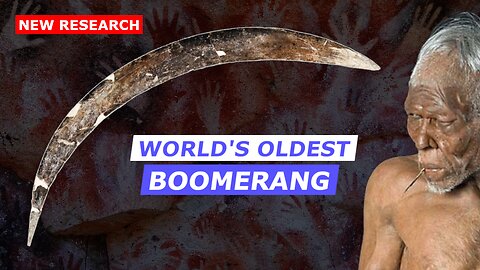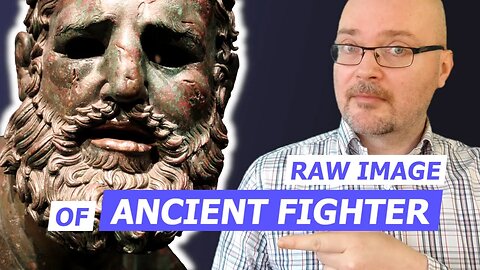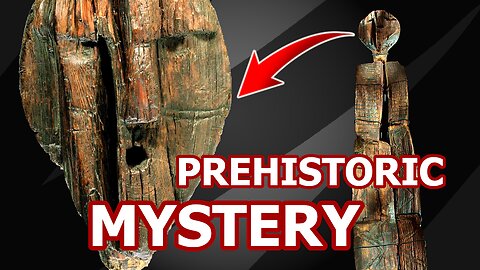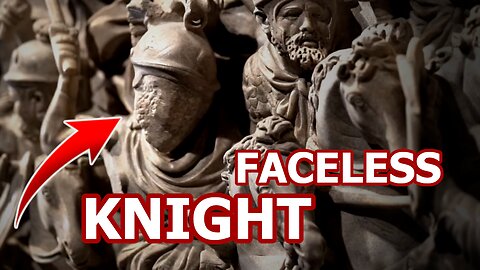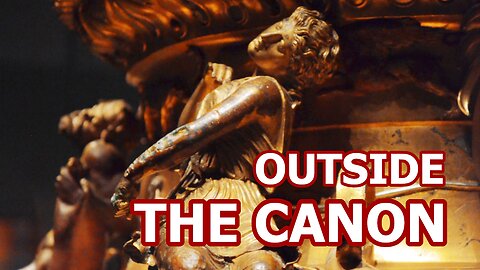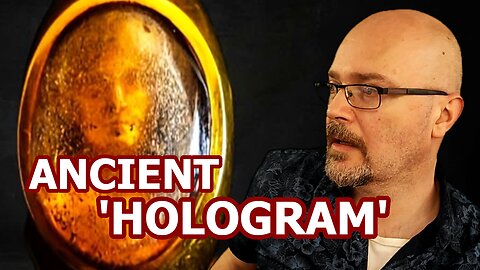-
The Surprising Truth About World's Oldest Boomerang
 LendianTVDiscovering the World’s Oldest Boomerang | Ancient Artifact Found in Poland | Aurignacian Culture Explained Boomerangs are famously associated with Aboriginal Australians — but what if the oldest known boomerang actually comes from Central Europe? In this mini documentary, join me as we explore the remarkable discovery of a 40,000-year-old mammoth ivory boomerang found in Obłazowa Cave, southern Poland. We dive deep into the archaeology behind this extraordinary artifact, the methods scientists used to date it, and what it reveals about the early Aurignacian people who crafted it. Learn about the possible uses of this unique tool, its ceremonial significance, and the fascinating rituals connected to the cave. Chapters: 00:00 Intro 00:58 The Research 03:27 The Weapon 07:14 The Ritual 13:32 The People 🔍 What you’ll learn in this video: The history and significance of the Obłazowa Cave boomerang How advanced scientific techniques reshaped our understanding of its age Insights into the Aurignacian culture and their remarkable art The mysterious ritual context surrounding the boomerang and other artifacts Comparisons with ancient rock art and burial customs in Ice Age Europe This discovery challenges our assumptions about prehistoric technology, revealing that complex tools and rituals were part of early human life. 👉 Don’t forget to like, comment, and subscribe for more archaeological mysteries and fascinating stories from the past!34 views
LendianTVDiscovering the World’s Oldest Boomerang | Ancient Artifact Found in Poland | Aurignacian Culture Explained Boomerangs are famously associated with Aboriginal Australians — but what if the oldest known boomerang actually comes from Central Europe? In this mini documentary, join me as we explore the remarkable discovery of a 40,000-year-old mammoth ivory boomerang found in Obłazowa Cave, southern Poland. We dive deep into the archaeology behind this extraordinary artifact, the methods scientists used to date it, and what it reveals about the early Aurignacian people who crafted it. Learn about the possible uses of this unique tool, its ceremonial significance, and the fascinating rituals connected to the cave. Chapters: 00:00 Intro 00:58 The Research 03:27 The Weapon 07:14 The Ritual 13:32 The People 🔍 What you’ll learn in this video: The history and significance of the Obłazowa Cave boomerang How advanced scientific techniques reshaped our understanding of its age Insights into the Aurignacian culture and their remarkable art The mysterious ritual context surrounding the boomerang and other artifacts Comparisons with ancient rock art and burial customs in Ice Age Europe This discovery challenges our assumptions about prehistoric technology, revealing that complex tools and rituals were part of early human life. 👉 Don’t forget to like, comment, and subscribe for more archaeological mysteries and fascinating stories from the past!34 views -
Ancient Sculpture That Turns Pain into Art: The Boxer at Rest
 LendianTVThe Boxer at Rest, also known as the Terme Boxer, is one of the world's most iconic ancient bronze statues. Dating to the Hellenistic period, it marks a striking departure from the idealized depictions of victorious athletes commonly found in classical Greek art. Instead, it presents a raw and unfiltered image of a battered fighter.25 views
LendianTVThe Boxer at Rest, also known as the Terme Boxer, is one of the world's most iconic ancient bronze statues. Dating to the Hellenistic period, it marks a striking departure from the idealized depictions of victorious athletes commonly found in classical Greek art. Instead, it presents a raw and unfiltered image of a battered fighter.25 views -
Ancient Roman Vessel Crafted with Nanotechnology | The Lycurgus Cup
 LendianTVThe Lycurgus Cup is an example of an ancient artifact that amazes us with its sophistication and advanced technologies employed in its production. The painstakingly carved three-dimensional decorations depicting the demise of King Lycurgus and the color-changing dichroic glass with embedded nanoparticles of gold and silver make it a true masterpiece crafted not by ancient aliens but by ingenious Roman artisans.30 views
LendianTVThe Lycurgus Cup is an example of an ancient artifact that amazes us with its sophistication and advanced technologies employed in its production. The painstakingly carved three-dimensional decorations depicting the demise of King Lycurgus and the color-changing dichroic glass with embedded nanoparticles of gold and silver make it a true masterpiece crafted not by ancient aliens but by ingenious Roman artisans.30 views -
12,000-Year-Old Sculpture Found in a Peat Bog | The Shigir Idol
 LendianTVThe Shigir Idol is over twice as old as the Egyptian pyramids and about the same age as the earliest settlement at the famous Gobekli Tepe archaeological site making it the oldest known wooden sculpture. People who carved it lived through a dramatic climate change at the end of the last ice age. Discovered in 1890 in a peat bog on the eastern slope of the Middle Urals, the idol is covered in geometric patterns among which human-like faces are scattered. A head with an uneasy expression tops the sculpture.15 views
LendianTVThe Shigir Idol is over twice as old as the Egyptian pyramids and about the same age as the earliest settlement at the famous Gobekli Tepe archaeological site making it the oldest known wooden sculpture. People who carved it lived through a dramatic climate change at the end of the last ice age. Discovered in 1890 in a peat bog on the eastern slope of the Middle Urals, the idol is covered in geometric patterns among which human-like faces are scattered. A head with an uneasy expression tops the sculpture.15 views -
Possibly the Cutest Stone Age Artifact | The Amber Bear of Slupsk
 LendianTVThe Amber Bear of Slupsk was found in 1887 during peat mining near Słupsk, modern-day Poland. It was made by carving and polishing a conveniently shaped piece of sea amber with a natural opening. Signs of wear around the holes indicate it was worn on a cord probably as an amulet. It is estimated that it was made between 9600 and 4100 BC. Prehistory41 views
LendianTVThe Amber Bear of Slupsk was found in 1887 during peat mining near Słupsk, modern-day Poland. It was made by carving and polishing a conveniently shaped piece of sea amber with a natural opening. Signs of wear around the holes indicate it was worn on a cord probably as an amulet. It is estimated that it was made between 9600 and 4100 BC. Prehistory41 views -
Ancient Sarcophagus of Roman General | The Portonaccio sarcophagus
 LendianTVThe Portonaccio sarcophagus, dated to around 180 AD, is a striking example of ancient Roman funerary art. Its front side portrays one of the most realistic engagements between Roman cavalry and barbarians during the Marcomannic Wars. A faceless knight dominates at the center of the scene. His identity is debatable and so are the reasons why his face was never carved. Roman Empire Aulus Julius Pompilius Piso First Legion Italica Fourth Legion Flavia Felix31 views
LendianTVThe Portonaccio sarcophagus, dated to around 180 AD, is a striking example of ancient Roman funerary art. Its front side portrays one of the most realistic engagements between Roman cavalry and barbarians during the Marcomannic Wars. A faceless knight dominates at the center of the scene. His identity is debatable and so are the reasons why his face was never carved. Roman Empire Aulus Julius Pompilius Piso First Legion Italica Fourth Legion Flavia Felix31 views -
Masterpiece of Hellenistic Realism in Art | The bronze head of Seuthes III
 LendianTVThe bronze head of Seuthes III was discovered in 2004 by Bulgarian archaeologists in the royal burial site of Golyama Kosmatka, not far from the ancient city of Seuthopolis. Seuthes III was a king of Odrysia, a part of Thrace, during the late 4th century BC. The findings at Golyama Kosmatka suggest that an Orphic ritual was carried out on the day of his burial.22 views
LendianTVThe bronze head of Seuthes III was discovered in 2004 by Bulgarian archaeologists in the royal burial site of Golyama Kosmatka, not far from the ancient city of Seuthopolis. Seuthes III was a king of Odrysia, a part of Thrace, during the late 4th century BC. The findings at Golyama Kosmatka suggest that an Orphic ritual was carried out on the day of his burial.22 views -
The Only Surviving Ancient Roman Imperial Regalia | The Scepter of Maxentius
 LendianTVUntil the discovery of the imperial insignia of Maxentius, we could only read about such objects in ancient sources and see their depictions on coins and sculptures. The insignia were personal to each Roman emperor and upon his death, they were usually burned together with his body. However, Maxentius' regalia were hidden in dramatic circumstances on October 28, 312 AD, allowing their preservation.36 views
LendianTVUntil the discovery of the imperial insignia of Maxentius, we could only read about such objects in ancient sources and see their depictions on coins and sculptures. The insignia were personal to each Roman emperor and upon his death, they were usually burned together with his body. However, Maxentius' regalia were hidden in dramatic circumstances on October 28, 312 AD, allowing their preservation.36 views -
Stunning Ancient Greek Ritual Vessel | The Derveni Krater
 LendianTVThe Derveni Krater stands out as one of the finest and most elaborate examples of the highly sophisticated repoussé metalworking technique from the Greek classical period. Its decoration was well outside the usual canon even at the time of manufacture.19 views
LendianTVThe Derveni Krater stands out as one of the finest and most elaborate examples of the highly sophisticated repoussé metalworking technique from the Greek classical period. Its decoration was well outside the usual canon even at the time of manufacture.19 views -
A Haunting Roman Artifact | The 'Carvilio' Ring
 LendianTVThe ring containing a holographic-like image of a young man was found on the finger of Carvilio's mother in an ancient tomb where she and her son were buried.36 views
LendianTVThe ring containing a holographic-like image of a young man was found on the finger of Carvilio's mother in an ancient tomb where she and her son were buried.36 views
